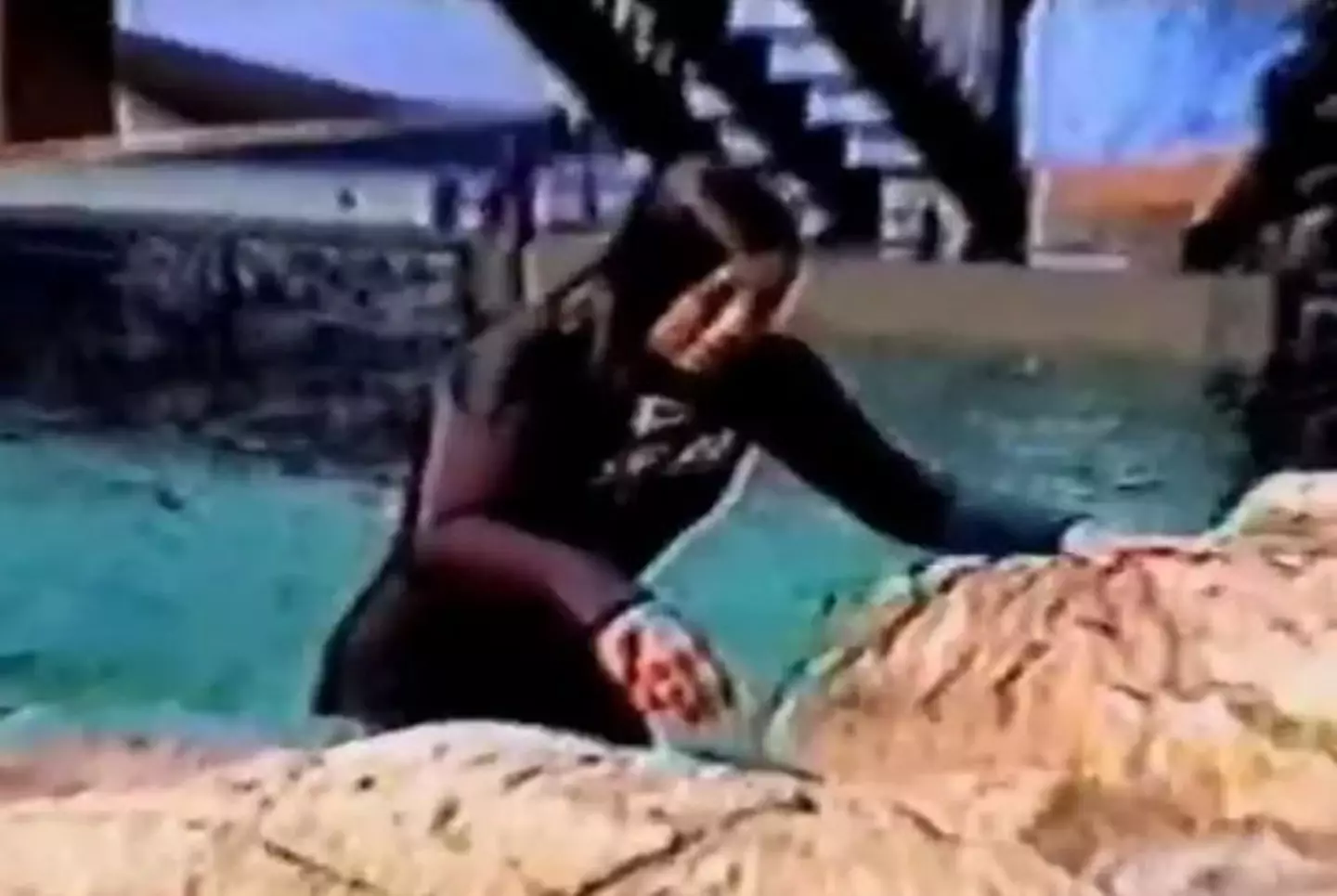She had done it hundreds of times before. The routine was second nature, a dance perfected through years of trust, repetition, and showmanship. Tamarie Tollison, one of SeaWorld’s most experienced trainers, had built her entire career on her bond with the park’s most prized performer—a massive killer whale known for both its majestic grace and unpredictable nature. Guests from all over the world flocked to see them perform together, mesmerized by the image of human and orca moving in perfect synchrony. That afternoon, the stadium was packed, the summer sun shimmering off the surface of the turquoise pool, the smell of saltwater drifting through the air. Nobody knew they were moments away from witnessing a tragedy that would send shockwaves far beyond the park’s walls.
The show began like any other. Tamarie flashed her familiar smile, waved to the crowd, and dove fearlessly into the water beside the towering dorsal fin. The killer whale responded on cue, circling her in playful arcs, occasionally breaching in a spray of foam that drew delighted gasps from the audience. Tamarie had done this countless times before, knowing the signals, the patterns, the silent language between them. Yet beneath the surface, something was different. The whale’s movements were just a fraction faster, sharper, more charged than usual. Tamarie noticed it, but in the split-second world of performance, there was no time to dwell on unease.
.webp)
When it came time for the finale, Tamarie dove deep, intending to emerge riding the whale’s back in a dramatic display. But this time, the choreography collapsed. Without warning, the whale darted downward with Tamarie still in its grip. From the stands, the moment looked almost like part of the act—until a muffled, piercing scream erupted from beneath the surface. Gasps spread through the crowd. Seconds later, a dark cloud began to swirl through the water, and people realized it was not part of the performance. Panic gripped the trainers on the pool deck as whistles blew, hands waved frantically, and emergency protocols kicked in.
The water, once crystal blue, was now streaked with red. The killer whale thrashed violently, sending waves crashing against the tank walls. Trainers rushed to the edge, shouting commands, pounding the water, trying desperately to redirect the animal’s attention. Every second felt like an eternity. Tamarie’s body surfaced briefly, limp, before disappearing again beneath the churning foam. Parents clutched their children’s faces, shielding them from the sight, while others fumbled for phones, recording the chaos without fully understanding the horror they were capturing.

It took several agonizing minutes before the whale finally released her. When Tamarie was pulled from the water, her injuries were immediately visible and catastrophic. Paramedics swarmed in, but the severity of the wounds made the outcome grim from the start. The stadium, once echoing with laughter and applause, had fallen into an eerie silence broken only by the shrill wail of sirens. Within the hour, news vans began arriving outside the park, their satellite dishes angling toward the sky, eager to broadcast the breaking story that would dominate headlines for weeks.
In the days that followed, the incident ignited a media firestorm. SeaWorld’s carefully cultivated image of harmony between humans and killer whales unraveled under public scrutiny. Former trainers stepped forward with chilling accounts of aggression, stress, and danger that had been downplayed or hidden from the public eye. Animal behavior experts explained that killer whales in captivity often experience psychological distress, leading to unpredictable and sometimes violent behavior. The footage from that afternoon—shared endlessly across television and social media—became impossible to ignore.
Public opinion shifted almost overnight. For years, SeaWorld had marketed its shows as symbols of wonder, education, and conservation. Now, those same shows were being condemned as exploitative, cruel, and dangerously misleading. Protesters gathered outside park gates, holding signs that read “Free the Whales” and “Entertainment Shouldn’t Cost Lives.” Documentaries began dissecting the tragedy, tying it to a long history of incidents involving captive orcas. Attendance numbers dipped, investors grew nervous, and government agencies opened investigations into the park’s animal care practices.

For Tamarie’s family, the loss was not just a headline—it was a devastating personal reality. Friends remembered her as fearless, compassionate, and deeply committed to the animals she trained. Yet her death also became a turning point in a much larger conversation about the ethics of marine mammal captivity. Lawmakers introduced bills aimed at ending the practice, and some countries outright banned orca performances altogether. The incident became a rallying cry for animal rights advocates, sparking global debates and inspiring changes that rippled far beyond SeaWorld’s gates.
In the months that followed, the killer whale involved in the attack remained in captivity, a living reminder of the tragedy. SeaWorld announced new safety protocols and modifications to its shows, eventually phasing out certain stunts altogether. But for many, the changes came too late. The memory of that summer afternoon—the scream, the red-tinged water, the stunned silence—had already etched itself into public memory. What had once been a brand built on awe and wonder was now forever shadowed by the reality of what can happen when wild predators are forced into an unnatural stage.
The story of Tamarie Tollison’s final dive continues to resonate years later, serving as both a cautionary tale and a catalyst for reform. It is a reminder that beneath the polished spectacle of marine entertainment lies a complex, often dangerous truth: these animals are not performers by nature, and the risks of forcing them into human-designed routines can be devastating. As the world looks back on that day, the question remains—was it an unavoidable accident, or the inevitable consequence of keeping the ocean’s most powerful predators in a tank? For many, the answer is already clear.